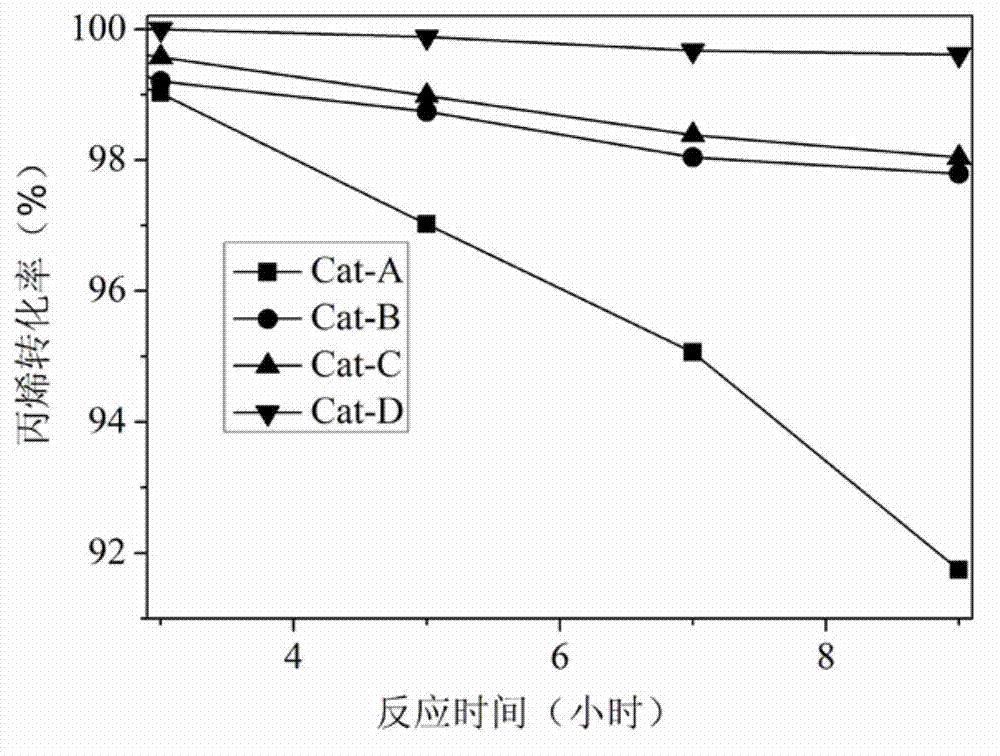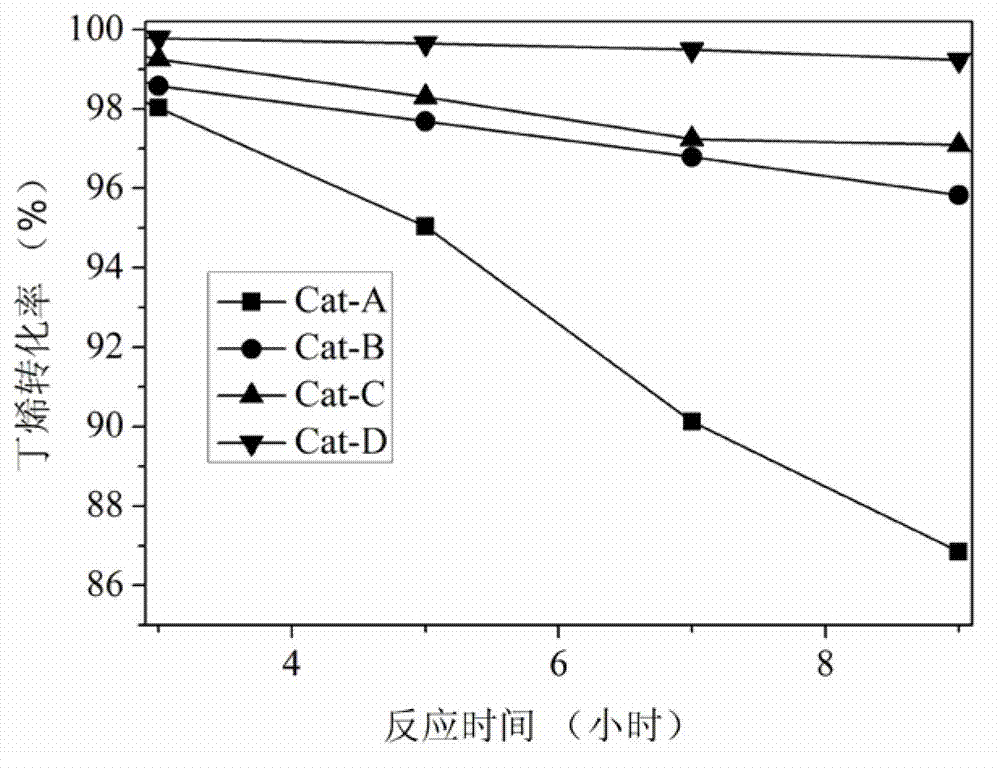Method for improving acidity of MCM-22 molecular sieve based catalyst
A technology of MCM-22 and molecular sieve, which is applied in molecular sieve catalysts, chemical instruments and methods, physical/chemical process catalysts, etc., can solve the problems of low acid density, weak acid strength, limitations, etc., and achieve increased acid density and high catalytic activity Effect
- Summary
- Abstract
- Description
- Claims
- Application Information
AI Technical Summary
Problems solved by technology
Method used
Image
Examples
Embodiment 1
[0019] Get 20g roasting and remove the Na-type MCM-22 molecular sieve of template agent, be 0.05 mol / liter Al(NO 3 ) 3 The solution was treated in a stainless steel reactor at 175 degrees Celsius for 72 hours, filtered, washed and dried; the product was exchanged in 400 ml of ammonium nitrate solution with a concentration of 0.8 mol / liter at 80 degrees Celsius for 2 hours, twice in a row, filtered and washed After drying, it is calcined at 540°C to obtain hydrogen-type molecular sieves. The molecular sieves were pressed into tablets and crushed into 20-40 mesh particles, which were designated as Cat-B. The change of propylene and butene conversion with time on the obtained catalyst sample is shown in figure 1 with figure 2 .
Embodiment 2
[0021] Get 20g roasting and remove the Na-type MCM-22 molecular sieve of template agent, be 0.1 mol / liter Al(NO 3 ) 3 The solution was treated in a stainless steel reactor at 175 degrees Celsius for 72 hours, filtered, washed and dried; the product was exchanged in 400 ml of ammonium nitrate solution with a concentration of 0.8 mol / liter at 80 degrees Celsius for 2 hours, twice in a row, filtered and washed After drying, it is calcined at 540°C to obtain hydrogen-type molecular sieves. The molecular sieves were pressed into tablets and crushed into 20-40 mesh particles, which were designated as Cat-C. The change of propylene and butene conversion with time on the obtained catalyst sample is shown in figure 1 with figure 2 .
Embodiment 3
[0023] Get 20g roasting and remove the Na-type MCM-22 molecular sieve of template agent, be 0.2 mol / liter Al(NO 3 ) 3 The solution was treated in a stainless steel reactor at 175 degrees Celsius for 72 hours, filtered, washed and dried; the product was exchanged in 400 ml of ammonium nitrate solution with a concentration of 0.8 mol / liter at 80 degrees Celsius for 2 hours, twice in a row, filtered and washed After drying, it is calcined at 540°C to obtain hydrogen-type molecular sieves. The molecular sieve is pressed into tablets and crushed into 20-40 mesh particles, which are designated as Cat-D. The change of propylene and butene conversion with time on the obtained catalyst sample is shown in figure 1 with figure 2 .
PUM
 Login to View More
Login to View More Abstract
Description
Claims
Application Information
 Login to View More
Login to View More - R&D
- Intellectual Property
- Life Sciences
- Materials
- Tech Scout
- Unparalleled Data Quality
- Higher Quality Content
- 60% Fewer Hallucinations
Browse by: Latest US Patents, China's latest patents, Technical Efficacy Thesaurus, Application Domain, Technology Topic, Popular Technical Reports.
© 2025 PatSnap. All rights reserved.Legal|Privacy policy|Modern Slavery Act Transparency Statement|Sitemap|About US| Contact US: help@patsnap.com



